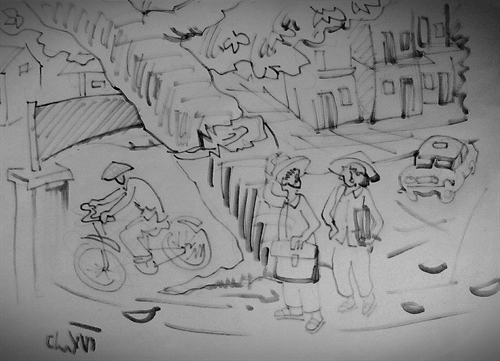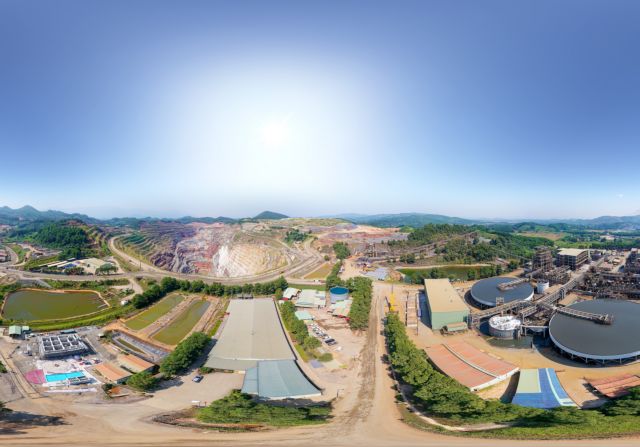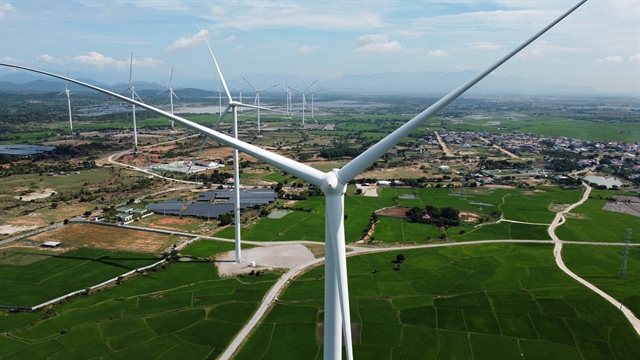 Talk Around Town
Talk Around Town

There is a lack of readiness to protect people’s safety, given that the weather forecasting has repeatedly failed to do its job accurately.
 |
By Hồng Minh
When it comes to talking about the weather these days, topics people in Hà Nội must discuss are the storms, wrong forecasts, falling trees and floods.
The initial three storms of the season within a month did not happen exactly as forecast by the national agency. What happened in reality has not only left people bewildered about how the weatherman could get it so wrong, but also showed how clearly unready people were in coping with these natural disasters.
The three storms, all of them directly affected the northern region, caused losses of over VNĐ6.8 trillion (US$302.2 million) – equal to two thirds of the total losses caused by natural disasters in the first half of the year, and quite close to the damage bill for the whole of 2015.
An online conference to review lessons drawn from the last three storms candidly pointed out the differences between reality and forecasts!
That was especially true for the first storm, Mirinae, which hit the North late last month, where wind intensity and rain greatly exceeded that predicted in the forecast. As the forecast agency firmly said that 70 per cent of that storm would hit hard in Quảng Ninh and Hải Phòng, residents in Hà Nội and Ninh Bình were not prepared. They suddenly found themselves in an unexpected strong storm that uprooted thousands of trees and damaged hundreds of houses.
From the serious damage of Mirinae, the forecast for the second, Nida, which came just a week later, was raised so high that people panicked and were anxious. At central and local levels, preparation activities were highly concentrated. Everyone was ready to cope with a storm that was forecast to be even stronger than Mirinae, however, Nida went straight to Hong Kong.
The last storm – Dianmu from last week – was described with the most laughs and tears. It was first forecast to hit Hải Phòng, Thái Bình and Nam Định. Thousands of local residents were evacuated in advance. But the storm, once again, omitted the predicted locations by hitting Hà Nội three to four hours earlier than expected.
To be fair, disasters are difficult to anticipate.
An Economist column had an article ‘Why weather forecasts are so often wrong’ in June, which indicated that accurate weather forecasting depends on how many eyes there are in the sky.
“Over 11,000 observation stations across the world take hourly measurements of temperature, air pressure, humidity, wind speed and direction, rainfall and other conditions. Aircraft, merchant ships, weather balloons and satellites do the same thing and transmit data to weather stations on the ground,” it said, adding that supercomputers would join the dots, generate weather maps and spew out forecasts by matching them with similar weather patterns recorded in the past before the meteorologists interpret the forecasts by comparing them with different mathematical models and tweaking them by relying on the torrent of real-time data coming from the field.
Deputy director of the National Centre for Hydrometeorological Forecasting, Lê Thanh Hải, said the same thing - that errors in forecasting were inevitable.
“With the technology, network and processing systems at present, the exact probability of forecasts in Việt Nam depend mostly on the staff,” he said.
According to Hải, at present there are more than 500 weather monitoring stations, with 3,141 staff. Of those, 1,574 are monitoring staff and only 529 are forecasters.
He blamed the shortage of staff and outdated technology for the inaccurate weather forecasts.
“At provincial level, only five to seven weather forecasters are in charge of forecasting for the whole province,” Hải said, adding that this was a factor in the agency failing to accurately predict the weather.
So I guess the topic of the quality and reliability of weather forecasts in Việt Nam will be talked about forever.
Lack of readiness
Looking at the other side, the last three inaccurately-predicted storms showed that many people have not formed the habit of being ready for natural disasters.
During the first storm, where the predicted gale levels of 7-8 turned into a much stronger wind that knocked down hundreds of trees and blew away motorcycles, many students and office workers in Hà Nội suffered hardship on their way to school or workplace.
It was the same during the sudden third storm as children and parents went out to school and work without any active warning from schools and bosses.
Nguyễn Thị Hoa in Cầu Giấy District told Lao Động (Labour) newspaper that she only got permission to take time off in the afternoon at 2pm as the storm was predicted to hit Hà Nội at 5pm. She hurriedly headed to pick up her children from school. Unfortunately, the storm came early so she was caught right in the storm’s centre as she collected her children and took them home.
“It was lucky that we finally got home safe that day,” she said.
I was luckier than Hoa that day as I was permitted to work from home due to the predictions of severe rain and wind. But my daughter and her schoolmates as well as many other children in the city did not. They went to school as usual and at noon, I and other parents all received a sudden call to pick up our children as soon as possible. Many got stuck struggling in the storm like Hoa.
After all, like with most terrible natural disasters that have happened before, there was almost no preparation to cope with the danger. There was almost no information from schools or workplaces about the dangers so as to plan the possibility of a day-off in advance.
Obviously, there is a lack of readiness to protect people’s safety, given that the weather forecasting has repeatedly failed to do its job accurately.
Readiness and preparation are needed not only for natural disasters, but for all catastrophes that may harm human life. — VNS




